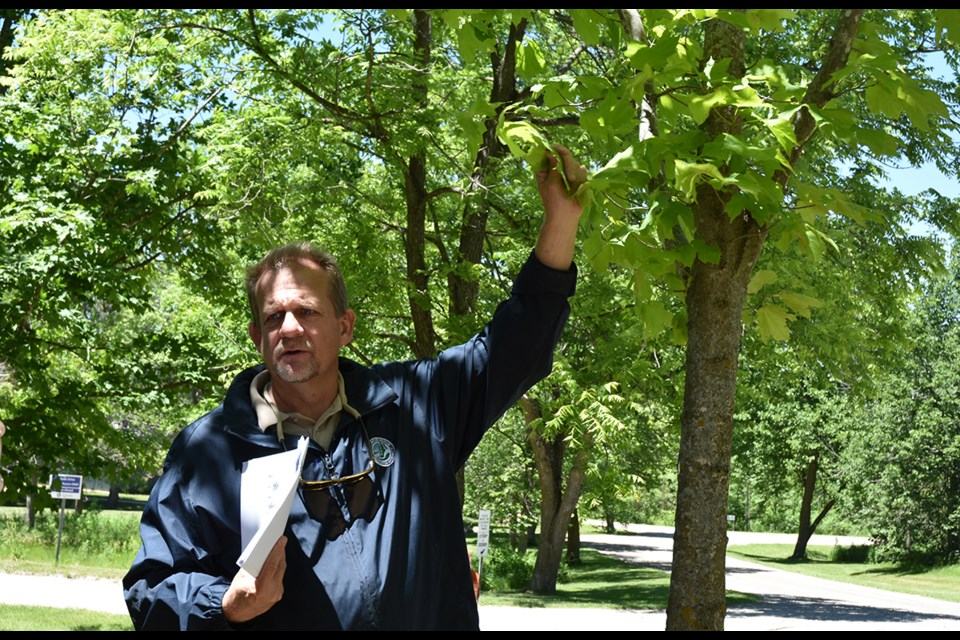Years ago, the Bond Head/Bradford Garden Club transformed a property at Highway 400 and Line 5 into a Scotch Settlement Arboretum, or a tree park.
The trees and shrubs were planted to provide an example of a key species.
Then the news: the Highway 400 employment lands were about to be serviced and developed, and a new interchange built at Line 5. The arboretum would have to go.
Fortunately, a partnership between the Town of Bradford West Gwillimbury, the garden club, and the Lake Simcoe Region Conservation Authority rescued significant trees and shrubs from the site.
Some of the trees were planted on municipal property, others went to families who had sponsored them, and the conservation authority selected about 30 of the trees for replanting at the Scanlon Creek Conservation Area.
On June 14, garden club members visited the conservation area near Scanlon House to see those trees — bur oak, balsam fir, black maple, sugar maple, red cedar, white spruce, white pine, serviceberry, honey locust, black cherry, nannyberry and burning bush.
Brian Kemp, the conservation authority’s manager of conservation lands, led the tour, which highlighted a new information kiosk at the arboretum and plans for new identification markers, which will provide key information about each species.
“That’s one of the reasons we do this. People get an idea of what a tree looks like, what it will be like in their yard,” Kemp said.
A case in point: the honey locust’s bright green spring foliage might tempt homeowners to plant the tree in their own yards, but, as Kemp noted, its habit of shedding twigs armed with sharp spines makes it a poor choice.
And the silver maple, while fast growing, has a shallow root system and brittle branches, making it a poor choice for urban areas, he said.
The arboretum is a work in progress, Kemp said.
Conservation authority staff are monitoring the health of the existing trees, as well as the more recent transplants, and they are dealing with issues such as the aftermath of May’s windstorm, which snapped tree limbs and brought down half a dozen large spruce trees.
In addition to touring the arboretum and its pollinator patch, the garden club visitors were introduced to the Head of Trails, where Kemp explained the system of four main trails that circle the core lands of the conservation area.
They saw the Discovery Play Garden and picnic pavilion, looked out over the Holland River, and had an opportunity to see the restoration project that transformed the former reservoir into a natural valleyland.
They also viewed the devastation caused by the emerald ash borer: dead and dying ash trees that dotted the landscape.
The conservation authority carried out an inventory of ash trees and will remove dead trees from along roads and trails, and adjacent to buildings where they could pose a hazard, he said. The number of potential hazard trees: 1,600.
Removing hazard trees and invasive species, such as dog strangling vine and garlic mustard, are part of the hard work that goes maintaining Scanlon Creek Conservation Area — but there are other projects.
“We just peck away every year, and add something new, freshen things up,” Kemp said.



